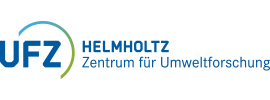Details zur Publikation |
| Kategorie | Textpublikation |
| Referenztyp | Zeitschriften |
| DOI | 10.1016/j.baae.2025.10.002 |
Lizenz  |
|
| Titel (primär) | Status and trends of Germany's urban biodiversity: a nationwide assessment and identified knowledge gaps |
| Autor | Wellmann, T.; Knapp, S.; Albert, C.; Egerer, M.; Fischer, L.K.; Kaiser, J.
|
| Quelle | Basic and Applied Ecology |
| Erscheinungsjahr | 2025 |
| Department | CLE; BZF; SUSOZ; UPOL |
| Band/Volume | 89 |
| Seite von | 37 |
| Seite bis | 49 |
| Sprache | englisch |
| Topic | T5 Future Landscapes T7 Bioeconomy |
| Supplements | Supplement 1 |
| Keywords | Biodiversity assessment; biodiversity dynamics; biotic homogenisation; conservation; monitoring; Germany; species richness; urban biodiversity |
| Abstract | Knowledge on the status and trends of biodiversity in urban areas is scattered and biased towards a few taxonomic groups, despite the fact that cities are where most humans get in touch with nature today. As part of the German Biodiversity Assessment (‘Faktencheck Artenvielfalt’), we conducted a nationwide review of published studies that recorded species occurrences in urban areas in Germany. We found that urban areas can host a large proportion of all plant, animal, and fungal species found in Germany, thus contributing to the nationwide conservation of biodiversity. However, compared to other habitat types outside of cities, the number of studies analysing the status and trends of urban biodiversity is relatively small. We could not identify a general trend over time for species diversity in German cities, based on the available studies. Even within individual species groups, there are combinations of declining, positive, and/or neutral trends. Information on population trends remains limited. Similarly, evidence of whether urbanisation promotes the homogenisation or differentiation of species groups is weak, with those groups investigated more thoroughly showing mixed patterns. With regard to biodiversity promotion, preserving the environmental heterogeneity that contributes to biodiversity is important, such as the maintenance of various habitat types (forests, parks, gardens, ponds, streams, etc.) that offer various food and nesting resources. Hence, the proportion of built-up impervious areas must remain limited, i.e. must not increase, and additional measures to promote biodiversity must be implemented. However, local authorities are largely ill-equipped to systematically monitor species occurrence across the variety of habitat types, or elements of green-blue infrastructure and taxonomic groups in cities. We discuss these findings, considering international urban biodiversity assessments and suggest key attributes of an effective national monitoring system to support urban biodiversity conservation and enhancement. |
| dauerhafte UFZ-Verlinkung | https://www.ufz.de/index.php?en=20939&ufzPublicationIdentifier=31446 |
| Wellmann, T., Knapp, S., Albert, C., Egerer, M., Fischer, L.K., Kaiser, J., Kramer-Schadt, S., Mascarenhas, A., Ristok, C., Sporbert, M., Straka, T.M., Strohbach, M.W., Bleidorn, C., Marx, J.M., Xylander, W.E.R., Keil, P., Haase, D. (2025): Status and trends of Germany's urban biodiversity: a nationwide assessment and identified knowledge gaps Basic Appl. Ecol. 89 , 37 - 49 10.1016/j.baae.2025.10.002 |
|
